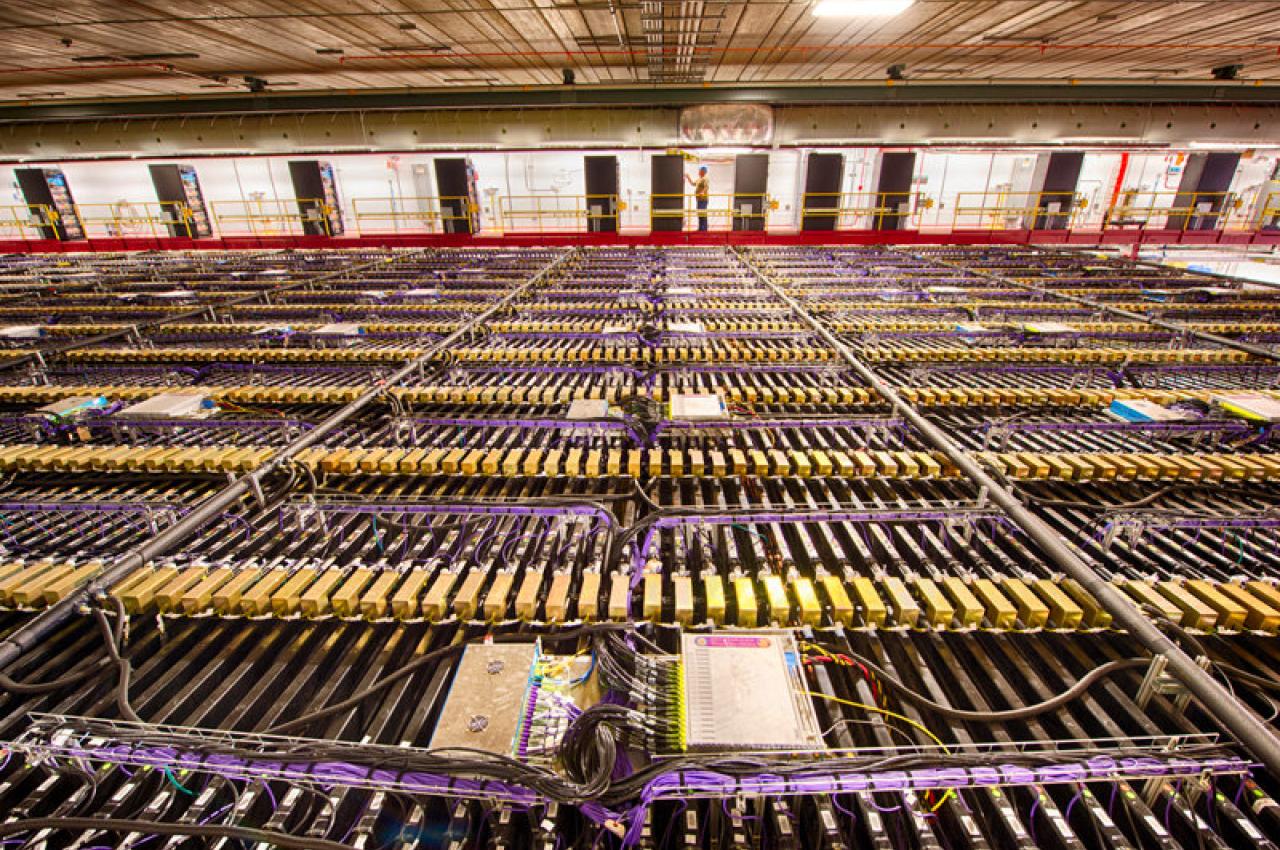Why Does Matter Even Exist? Tufts Physicists Help Uncover Clues
In the beginning of the universe, there should have been nothing but light. Based on current models without modification, physicists calculate that the Big Bang would have created equal amounts of matter and antimatter, ultimately annihilating each other and leaving a universe made purely of photons.
And yet here we are, orbiting a star, one of over 100 billion stars circling the Milky Way galaxy, among 2 trillion galaxies in the observable universe, all made of matter, with little antimatter to be found. Why this is the case has been one of the most puzzling questions facing physicists today.
Now, results from a large Fermilab-led collaborative study published in Nature, which included Tufts University physicists Hugh Gallagher, W. Anthony Mann, and Jeremy Wolcott among two international teams of hundreds of researchers, suggest a possible reason why matter persisted after the creation of the universe.
The Fermilab NOvA scientific collaboration, together with the T2K project in Japan, found that the oscillation behavior of neutrinos—electrically neutral subatomic particles about 10 million to 100 million times lighter than an electron—may have led to increase in the matter to antimatter ratio to the tune of one part per billion.
Why that might have been the case relates to how neutrinos behave. In the current universe, neutrinos can be generated during radioactive decay, which occurs in abundance in the Earth’s core, or when hydrogen fuses into helium, as it does in the Sun’s core.
Neutrinos are produced as a certain “flavor” (electron neutrino, muon neutrino, or tau neutrino). Each flavor is made up of not just a single pure wave, but is a superposition, or mix, of three wave functions, each with a slightly different mass.
Oscillating Like Piano String
Think of a neutrino as a musical chord, made up of sound generated by three strings, each with a different mass—a heavier bass string, a medium string, and a light string vibrating at different frequencies. A harmonious chord will have string frequencies in simple ratios, for example 2:1, 3:2, or 4:3.
As a neutrino moves through space, the larger mass function (bass string in the analogy) shifts in frequency relative to the smaller mass functions (lighter strings), similar to detuning one of the strings in a musical chord. In music, three strings vibrating at slightly different frequencies from harmonic ratios create constructive and destructive interference as phases move past each other. The result is a wobble or pulsation in volume that creates a beat pattern.
For neutrinos moving through space, the shifting wave frequencies of the three mass functions create a quantum beat pattern, observed as the oscillation between different flavor states.
“In the experiments, which stretched over 10 years, we made neutrinos and antineutrinos of one flavor (tau) in a particle accelerator and let them propagate hundreds of miles through the Earth,” said Wolcott, a Tufts research assistant professor.
“The detectors—a near one and a far one—pick up neutrinos of a different flavor due to the oscillations,” he said. “Our goal was to determine whether the oscillations were different between matter-based neutrinos and antimatter neutrinos. If neutrinos and antineutrinos oscillate differently, ending with slightly different mass, then their creation at the beginning of the universe could have led to an excess of matter over antimatter.”
Still Awaiting Definitive Data
The NOvA experiment did in fact pick up differences in oscillation between neutrinos and antineutrinos, but a definitive conclusion on the matter/antimatter imbalance remains out of reach until more data can be collected.
“One of the challenges with measuring neutrino oscillation is that there are a lot of degrees of freedom, including uncertainty in the ordering of the mass states—we still don’t know which mass function is the heaviest or lightest,” said Wolcott, “so we need a lot of data to help sort that out.”
The Tufts team made critical contributions to understanding of how neutrinos interact with the main detector—a massive 14,000-ton device composed of about 344,000 small PVC plastic modules filled with a liquid, which emits light when a neutrino triggers the release of charged particles.
The “far detector” was constructed in Ash River, Minnesota, 503 miles from the source of neutrinos created at Fermilab, just outside of Chicago. The “near detector,” a smaller version near the source in Illinois, takes a baseline measurement of the neutrinos exiting the particle accelerator. The two measurements are compared to determine the extent of neutrino oscillations.
“Detection is a challenge. We have to sort out oscillated neutrinos from the accelerator from unoscillated accelerator neutrinos, cosmic-ray particles, and other background particles that come in contact with the detector,” said Wolcott, who also coordinated the effort to analyze the neutrino oscillations that emerged from both the NOvA and T2K experiments.
“To put that in perspective, particles from natural sources hit the detector 150,000 times per second, but on average we only catch one neutrino per day from the particle accelerator source,” he said. “Most neutrinos slip through the Earth and our detectors and continue traveling through space, which is why they are sometimes called ‘ghost particles.’”
Latest Tufts Now
- Addressing Population Disparities Near the Worst Superfund SitesTufts researchers develop a scoring system to prioritize cleanup at polluted sites for most-affected communities
- When an Old Flag Isn’t So GrandMany states are redesigning their flags. Will it change how people feel about their home states?
- Uncovering the Biology of Growing OldLarge study in pet dogs uncovers potential new biomarkers of aging that may one day help them—and humans—live longer, healthier lives
- For Real Talk About Public Education, Check Out This Fictional SchoolAmid the many TV shows that get public schools wrong, Abbott Elementary’s nuanced stories and characters are a “palate cleanser,” say Tufts education experts
- Tufts Veterinarian Helps Produce First Purebred Herdwick Sheep Born in U.S.Years of planning, precision timing, and the persistence of a local farmer culminated in the birth of 11 lambs this summer
- Can AI Be Conscious?Experts debate the possibility at a symposium in honor of Daniel Dennett, and most agree it’s not a good thing













